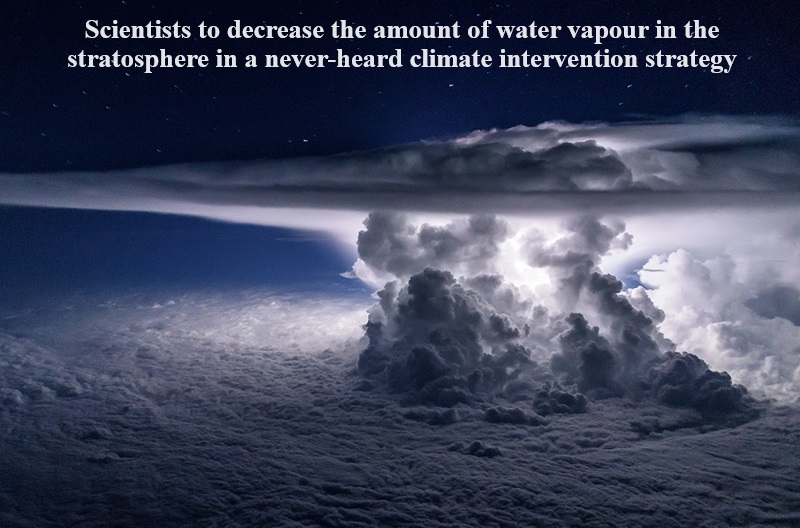
In an unprecedented approach to climate intervention, scientists are contemplating reducing the quantity of water vapor in the stratosphere, proposing to achieve this by injecting ice-forming nuclei into this atmospheric layer.
The rationale behind this initiative is that by diminishing the water content, more heat, in the form of infrared radiation, could escape into space, according to the scientists. This novel strategy is outlined in a study published in Science Advances. Despite carbon dioxide and methane being pivotal factors driving human-induced climate change, water vapor stands out as the most ubiquitous greenhouse gas. Consequently, the removal of water vapor from the atmosphere is posited to contribute to climate change mitigation, according to the study.
The investigation was conducted by researchers affiliated with the National Oceanic and Atmospheric Administration (NOAA). The study proposes the exploration of “intentional stratospheric dehydration” as a potential solution. Joshua Schwarz, the lead author of the study and a research physicist at NOAA’s Chemical Sciences Laboratory in Boulder, Colorado, explained that this process involves seeding the stratosphere with small particles, referred to as ice nuclei, using high-altitude aircraft.
Schwarz elaborated that by introducing such seeds into the stratosphere, it’s plausible that some of the water vapor would condense into ice and precipitate out of the atmosphere. This mechanism aims to facilitate the reduction of water vapor content in the stratosphere, ultimately contributing to the fight against climate change.

Post Your Comments